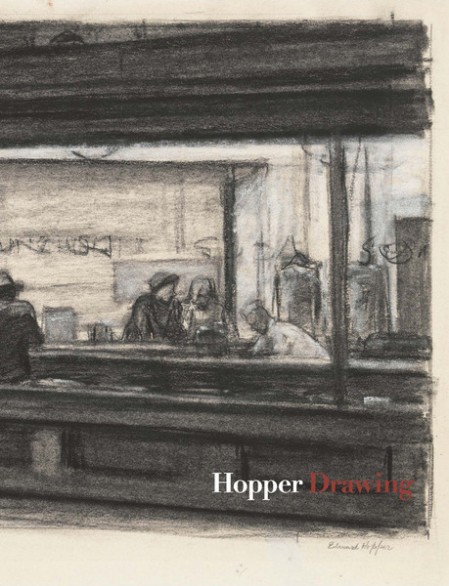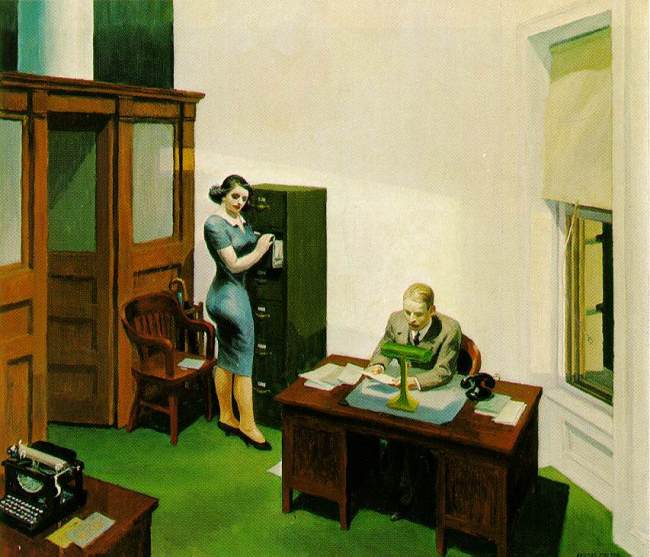I read a poem years ago in a small literary journal that inspired bittersweet feelings of solitude and isolation that I have always remembered. The initial idea for, and the metaphor used in, that poem was an evening view from the poet’s passing commuter train. The figure of a woman stood at the window of a particular lighted room in an otherwise dark city office building. That lonely poem entered my own bibliography in the same manner as many of Edward Hopper’s office building paintings.
My son and I recently attended Hopper Drawing: A Painter’s Process, currently on exhibit at the Walker Art Center in Minneapolis. The display focuses on Edward Hopper’s creative process. In a short film interview with the (at that time) aged artist, discussing his office building paintings, Hopper credited feelings incited by his end of the working day commuter train rides home as inspiration.
The lonely poem I’ve remembered as a series of sensations speaks to my original question in mid-January about whether certain qualities of our human experience can be better represented by nonverbal mediums such as painting, dance, and musical composition rather than language: Enter Poetry. But also, consider the following quote from Edward Hopper.
“Well, I’ve always been interested in approaching a big city in a train, and I can’t exactly describe the sensations, but they’re entirely human and perhaps have nothing to do with aesthetics. ”
-Edward Hopper
Office at Night/Edward Hopper




